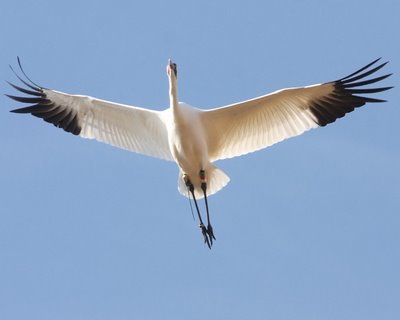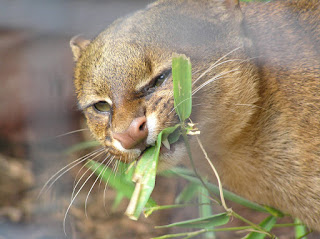East Pacific Green Turtle (Chelonia mydas)
1. Summary of the Description and the Ecology
of the East Pacific Green Turtle:
The East Pacific Green Turtle differs
from the more commonly known green turtle in size, color, and shell shape. The
shell, or carapace, of the adult East Pacific Green Turtle is “narrower, more
strongly vaulted, and more indented over the rear flippers than that of the
green turtle” (page 6). In addition, the East Pacific Green Turtle is much
lighter and smaller than the green turtle and also produced much smaller
hatchlings, in comparison. In regards to color, the hatchling East Pacific
Green turtle is typically black or dark grey, the juvenile is “brightly colored
with a mottled or radiating carapacial pattern of light and dark brown, reddish
brown, olive and yellow” (page 6).
The East Pacific Green Turtle typically
feeds along the west coast of Baja California and eats a herbivorous diet,
mainly consisting of sea grasses and algae, with the occasional marine animal
thrown in when available.
In terms of growth rate, time to reach
sexuality maturity, and reproductive characteristics; the East Pacific Green
Turtle is certainly a K-selected species. In most cases, it takes juveniles at
least 50 years to reach sexuality maturity, with a measly growth rate of 0.40 –
0.45 cm/year. Reproduction is seasonal in the case of this species, closely
tied to migratory patterns. Females travel extraordinary distances in order to
copulate and then nest.
2. Geographic and Population Changes of the East Pacific Green Turtle:
Due to the fact that sea turtles are
highly migratory, it is difficult to assess the true geographic range of the
East Pacific Green Turtle. However, this population of sea turtle is mainly
located in the eastern pacific (in U.S. waters) and in certain parts of Mexico
(but such turtles are in Mexico’s jurisdiction, not the U.S. and EPA’s). In
general, the range of the East Pacific Green turtle stretched from Canada, to
the western coasts of the United States, and down into Mexico.
In regards to its historical range, the
East Pacific Green Turtle could be found in abundance in the eastern Pacific
from Baja California to Peru and to the Galapagos Islands. The species found
plentiful feeding grounds in the Gulf of California. However, this geographical
range existed prior to the vast commercial exploitation of the East Pacific
Green Turtle. By the late 1970’s, the East Pacific Green Turtle was “virtually
extirpated” from the Gulf of California. This excessive exploitation of the
East Pacific Green Turtle has caused a drastic decline in its population size.
This pattern can be observed in Michoacán, Mexico (where 1/3 of all East Pacific
Green Turtles nest), in which population declines have been steady and
significant over the last 40 years. In today’s world, it is extremely rare to
see East Pacific Green Turtles in the Gulf of California, and even rarer to see
one that is beyond the juvenile stage.
3. Listing Date and Type of Listing of the East Pacific Green Turtle:
The East Pacific Green Turtle was listed
on the ESA on January 12, 1998. According to the U.S. Endangered Species Act of
1973, the breeding populations of the East Pacific Green turtle, from the
Pacific coast of Mexico, as listed as Endangered.
4. Cause of Listing and Main Threats to the East Pacific Green Turtle:
The East Pacific Green Turtle was listed
under the ESA because of its exhibition of an extreme population decline over
the last 30 years. According to the ESA, this decline can be attributed to the
“massive over-harvest of wintering turtles in the Sea of Cortez between 1950 and
1970”, as well as the “intense collection of eggs between 1960 and 1980 on the
mainland beaches of Mexico” (page vi).
The East Pacific Green Turtle is faces
several different threats. Due to the lack of knowledge of the whereabouts and
amount of these turtles in the northeastern Pacific, the vital (suspected)
foraging areas of the turtle, such as within the bays and inlets along the
coast of Baja California and Southern California, cannot be put under
protection of the ESA. This lack of knowledge on the whereabouts of large
proportions of the population of East Pacific Green Turtle also prevents
policy-makers and scientists from protecting the turtles from possible threats
while migrating. Regional threats posed to the species along the West Coast of
the United States include: debris, boat collisions, and incidental capture.
Regional threats posed in Mexican waters include the (illegal) harvest of
turtles and their eggs. These threats cause damage to a widespread variety of
aspects of the East Pacific Green Turtle’s livelihood.
Threats
to the species’ nesting environment include, but are not limited to:
1.
Directed
Take: The harvest of sea turtles and their eggs for food or any other
commercial use.
2.
Increased
Human Presence: The rapidly increasing human population in many areas
surrounding the Pacific Ocean is causing increasing pressure on the limited
coastal resources that man and marine life must share. Examples include loss of
nesting habitat to human recreational use of beaches, beaching camping/fires,
and an increase of litter on the beaches.
Threats
to the species’ marine environment include, but are not limited to:
1.
Environmental
Contaminants: Chemical contamination of the marine environment due to sewage
and especially agricultural runoff has been shown to cause lesions and
mortality to a wide variety of marine life.
2.
Debris
(Entanglement and Ingestion): East Pacific Green Turtles are vulnerable to
becoming entangled in abandoned fishing gar, ingestion of debris such as
plastic bags, plastic sheets, Styrofoam, and other trash that we dispose into
our waterways.
3.
Fisheries
(Incidental Take): Sea turtles are all to commonly caught as collateral damage
in big-rig fishing.
In addition to the above threats,
the ESA lists he Mexican fisheries that smuggle poached turtles from Michoacán
for meat to be the “far most important factor in the collapse of the East
Pacific Green Turtle” (page 5). From 1965 to 1977 more than 165,000 East
Pacific Green Turtles were harvested in the Mexican Pacific.
5. Description of Recovery Plan for the East Pacific Green Turtle:
The recovery plan objective for the East
Pacific Green Turtle is to delist the regionally important population. In order
to do so, the ESA determined that the population must meet the following
example criteria, along with many others:
1.
Each
stock must average 5,000 (or a biologically reasonable estimate based on the
goal of maintaining a stable population) for over six years
2.
Nesting
populations at “source beaches” are either stable or increasing over a 25-year
monitoring period.
3.
Existing
foraging areas are maintained as healthy environments.
4.
International
agreements are in place to protect shared stocks.
The ESA states that there are 6 major
actions that must take place in order for recovery to happen, in no order:
1.
Minimize
boat collision mortalities, particularly within San Diego County, California.
2.
Minimize
incidental mortalities of turtles by commercial fishing operations.
3.
Support
the efforts of Mexico and the countries of Central America to census and
protect nesting East Pacific Green Turtles, their eggs, and nesting beaches.
4.
Determine
population size and status in U.S. waters through regular surveys.
5.
Identify
stock home range(s) using DNA analysis.
6.
Identify
and protect primary foraging areas in U.S. jurisdiction
Personal Actions:
Personally, I can, along with all others,
ensure that my trash does not end up in the ocean. In addition, I can
significantly reduce the amount of plastic bags, bottles, and straws I use in
my everyday consumerism. Also, people can refuse to camp on beaches of turtle
nesting sites - we must remember to share our beautiful beaches with the marine
life that inhabits them. Lastly, we can promote the destruction of the Mexican
industries that process sea turtle leather as well as other goods/delicacies
that harm the East Pacific Sea Turtle.
I believe that recognizing that we, as
college students, are not only part of the problem, but also part of the
solution is the first and perhaps the most important step in saving the East
Pacific Green Turtle.
References:
Recovery Plan for U.S. Pacific
Populations of the East Pacific Green Turtle (Chelonia mydas) prepared by the
Pacific Sea Turtle Recovery Team for National Marine Fisheries Service, Silver
Spring, Maryland and Pacific Region, U.S. Fish and Wildlife Service, Portland,
Oregon. http://ecos.fws.gov/docs/recovery_plan/981201f.pdf





















